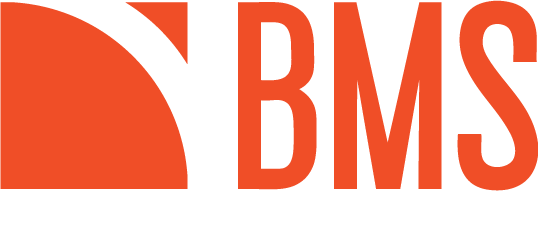5 LOGICAL STEPS
Theme: Human Resources – Practical Compensation Tips for Small Companies
By Jos Bosmans
The Essence
- A small business – from 10 up to 100 staff – can substantially benefit from linking it’s compensation to it’s business goals – without spending more or increasing their salary bill.
- How you go to market will ultimately define your best organization type: centralized vs decentralized, and hierarchy, flatarchy or matrix
- Internal fairness within your compensation structure drives commitment and intrinsic motivation of employees. Transparent communication puts you in the driver seat replacing the Gossip Ghost
- External fairness positions you in the salary market based on what you need or can afford and determines your access to the quality level of talent. Your personal compensation must be in line with the company’s positioning to establish credibility
- Consistent and transparent communication allows your people to make autonomous and competent decisions about their relation with the company. It is 100% better to have 1 committed employee than 5 “halfways”.

When you first start your business or when you go through a major revision of your product or service, your focus is on finding and delivering the unique features that make your company stand-out from the rest. And as long as the owner(s), together with a couple of front liners are doing all of the work, there is understandably no focus on compensation for the bigger group of employees that will take over to make your company a success. When you are only stressing out over 2 things – getting funding and keeping your uniqueness intact – at that point, you should also make some time to consider how you will fairly compensate your current and future people so that they become intrinsically motivated and committed to what they are doing.
Understanding Fairness
In this context, “fair” is an action word: you have to actively pursue this equitability, including for yourself vis-a-vis the rest.
In the first instance, it refers to Internal Fairness: making sure that within the organization all employees are equitably rewarded for their contribution to the goals of the company. External Fairness refers to your pay line: how much is paid by your competitors/ sector colleagues for similar work.
Deciding on Organization Design (1)
Before resolving how much you should pay for each job, in your mind you have already considered a couple of strategic choices:
- Will you centralize all decisions to the head honcho – probably “you” if you are a start-up – or will you decentralize decisions to the people who actually do the work? It’s one of these choices that we make subconsciously, based on mindset about people, previous experiences, and success stories from others, while a lot should depend on consciously reviewing how you best interact with your customers (2)
What is the impact on job design?
Centralized: nobody has any real accountability or responsibility except for shoving information upwards
Decentralized: everybody in the organization is empowered to tackle issues or make decisions in their field of expertise or customer base.
- Does your business process require a functional, hierarchical structure to operate smoothly or would it rather benefit from a flat organization or maybe from a third option: does your business require input from many specialists before a decision is made by the product/service or client owner (matrix)
What is the impact on job design?
Hierarchy: everybody has a well defined accountability as defined by clear responsibility descriptions
Flat (Flatarchy): broad role descriptions define everybody’s playing field, including interactions with specialist support parties
Matrix: these are essentially networked structures, and people take lead positions depending on the client or the issue at hand.
Implementing Internal Fairness
Responsibilities or what I like to call Expected Contributions are what a company will pay to do a particular job; Actual Contributions within that framework will have strong impact how well a specific employee is paid
You can introduce fairness by putting in place a compensation structure reflecting the relative importance of the Expected Contributions to the company’s objectives. Once this exercise is finished, it takes courage to transparently communicate about it, but it is mandatory if you want to reap the benefits longer term.
Functional organizations with 5 or more layers below the top (CEO,MD) will have to reflect this hierarchy in their compensation structure: you should have as many salary classes as there are discernable levels in your organization. The next step is to work your way through from the bottom upwards, using midpoints . At this midpoint employees are able to contribute all that is expected- we call this the job standard or rate.
The uplifts from one midpoint to the next will be 10 to 15 % for clerical levels and 20 to 25% for managerial levels.
The spread around these midpoints (from minimum to maximum) should at least be of a similar value, but I would recommend having overlaps with the previous and the next category up.
Flat and Matrix Organizations with typically 1 to 3 layers below the top person, reflect this in broad compensation categories, also centered around midpoints, but inter midpoint jumps of 50 up to 100% are recommended. This means that you expect at least half to double more contribution from somebody in the next higher category.
Monetizing External Fairness
Many CEOs take on a god-like role when it comes to defining what is a fair salary for a particular job.
My advice: curtail your gut feel and delay your decision till after you have carefully investigated the salary market like you would do for a product design feature or a piece of equipment to buy . Work the issue. Study it.
A market survey requires some rigid,unbiased, methodological data collection and relevant statistical computations.
Based on vision, projected margin/free cash flow,market positioning, and other cost ramifications, the CEO or owner (and only s/he) can then make an informed decision on where s/he wants to position the company in the salary market: Match – Lead – Lag the market.
This is a fundamental strategic key decision that will impact the company for many years to come, in two ways: its’ cost base and the quality of talent that the company will be able to attract and retain.
In case you decide to ignore the outcomes of the market survey completely, don’t proceed with salary structuring as it will frustrate existing and new employees and jeopardize the employer-employee relationship every time salary comes up, especially when the visible rewards of the CEO are experienced as “un-fair”
Energizing Compensation
Your compensation structure ideally reflects your organization and business process and that in itself creates meaning for employees: when done well, employees will see the logic and the fairness and accept it.
Therefore there should be no hesitation to consistently and openly communicate about the compensation program and how it works. You might not need to communicate your pay line in the market, but more importantly you should educate them on how to progress through the system, without resorting to fixed, predictable rewards. The expectation is more motivating than the actual reward(3)!!
Transparency in the reward space allows your people to make autonomous and competent judgments about their relationship with the company. (4)
It is better to have 1 committed employee in your company than 5 “halfways” riding along.
Interested to discuss the current status of your compensation delivery, chat with us on our HR Chat LINE

NOTES
(1)The Structuring of Organisations, Henry MINTZBERG, 1979
(2) Thinking, Fast and Slow, D. Kahneman, 2011
(3) Hooked,Nir Eyal, 2013
(2) Self Determination Theory, R, Ryan and E. Deci, 2018




